I love spatial audio . I love the sensation of being put right inside a sonic sphere, with action happening all around me, or feeling like I’ve got a seat right inside the middle of an orchestra as the strings swoon overhead and the gong rattles from all angles. So why can I just not get my head around the inclusion of a spatial audio speaker system in the new Apple Studio Display ?
It’s a superlative offering from Apple (priced accordingly at $1,599 / £1,499 / AU$2,499), revealed at the company’s March 2022 event alongside the iPhone SE 3 , M1 Ultra chipset and a new iPad Air . A 27-inch, 5K display, it’s got lots of cool features that will make Apple die-hards and creatives squeal with joy.
There’s an anti-reflective coating on a screen pushing 14.7 million pixels at 600 nits of brightness. There are a good number of ports, including three USB-C and a Thunderbolt 4 connection. It’s even got the 12MP camera with the person-tracking Center Stage video calling feature built-in, just like the latest iPads. The one spot it’s lacking is with HDR support, but, for the most part, that’s a discussion for another article.
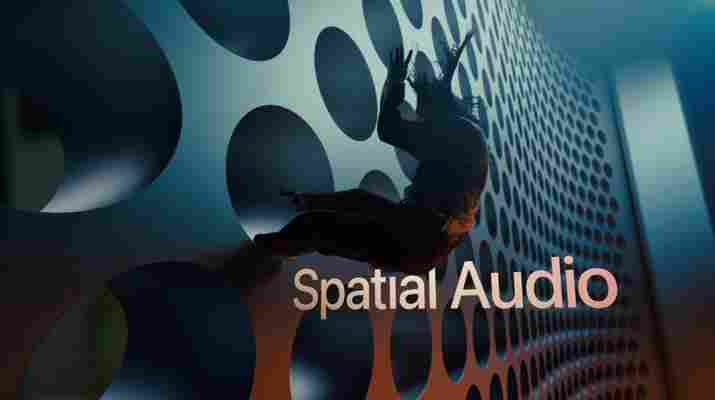
We’re here to talk audio, and what Apple has squeezed in here is inarguably impressive. Some monitors have no built-in speakers at all, instead, letting users supply their own for their desktops, while it’s rare to see anything more than some weak stereo speakers built into the majority of monitors.
Apple has taken a completely different approach. The Studio Display instead sports six speakers, consisting of four force-canceling woofers and two tweeters. Paired with the A13 Bionic chip, as seen in the iPhone 13 , it should be able to deliver convincing spatial sound from sources that support the format, such as a Netflix Dolby Atmos stream.
It’s part of a wider push from Apple to bring spatial audio more listeners, with the inclusion of lossless and spatial music being added to the Apple Music streaming service even inspiring me to petition for a new, full-sized Apple HomePod .
But, for my money, as both a fan of Apple products and a lover of immersive sound, I can’t see how this will effectively serve the two sorts of users I can identify it as being aimed at.
Finding an audience
Let’s say you’re an audio engineer working on a project that uses spatial audio – perhaps mixing a spatial audio album, or a Dolby Atmos film. The Studio Display just won’t be able to deliver the same clarity and dynamism that full-sized reference-grade speakers are going to offer. The equipment you will kit your studio out with will be incredibly sensitive and specifically built for the job.
Take this recent interview with world-renowned producer Trevor Horn , the Buggles star who has worked with everyone from Cher to Belle and Sebastian, and has audio credits on Hollywood blockbusters the size of Pearl Harbour. He’s recently been working on a Dolby Atmos remastering of the first Seal album and, now enamored with the format, is looking into “the process of installing a Dolby Atmos system” which “will incorporate PMC ci Series monitors.” PMC ci Series monitors cost many thousands of pounds depending on the configuration, and while you could argue the Studio Display offers an entry point for those interested in the format by comparison, will be a gulf apart in terms of what the likes of Horn will require for professional work.
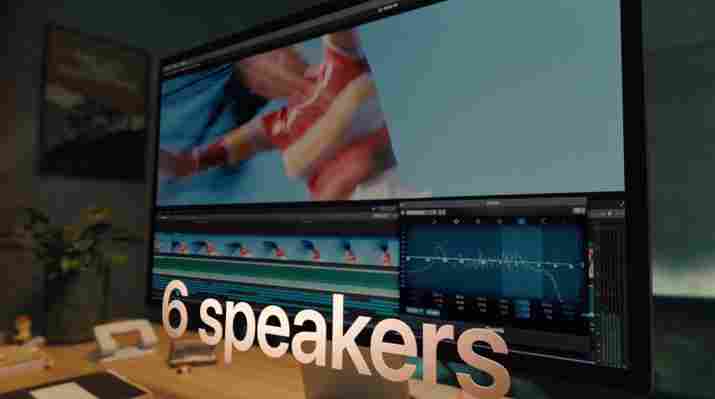
If you’re a cinema lover on the other hand, then surely you’re going to want to watch your films with spatial audio soundtracks on the biggest display in your home, presumably a living room TV. Given the asking price of the Studio Display, Apple may even be targeting the sort of people with enough money to have dedicated cinema rooms , to whom a few speakers in a monitor, however good, are sure to underwhelm.
It’s nice to have the option of spatial audio on your desk for those occasions where you’re watching a film in your office – but unless you’ve got a comfy sofa right up against your display, it’s certainly not going to be your go-to viewing experience, and definitely prices out the wider movie-loving masses. There isn't even HDR format support, so you're severely lacking in what makes up a good part of the accompanying visual joy of the cinematic experience.
It’s interesting, as Apple very rarely deals in overkill. It usually waits until a space in the market has been carved out by a competitor, and then swoops in and does a better job of it. Here for once, Apple is leading the charge, from both a software and services standpoint, and a hardware one in terms of desktop support for spatial audio. And for that, it should be applauded. But I can’t help feeling it has mobilized spatial audio in the wrong part of its arsenal. As I’d mentioned earlier, I’d love to instead see a HomePod 2 , or wider support for spatial audio lower down the AirPods range, beyond the AirPods Pro and AirPods Max .
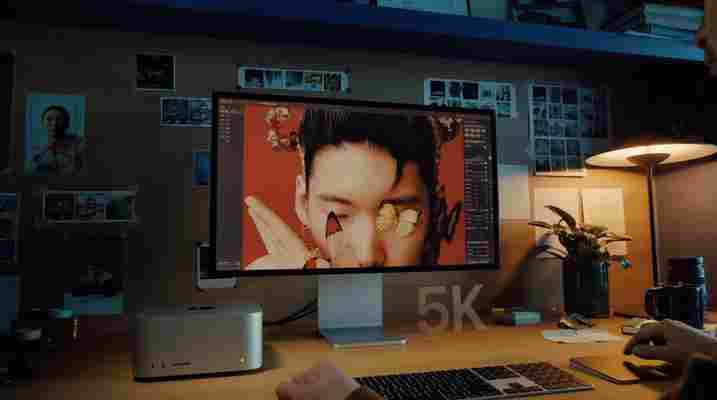
For the sake of balance, I’ll point out here that I’m in the minority on the TechRadar team when it comes to the Studio Display. My peers love it – Nick Pino called it the “ best workstation for audio lovers ” when combined with Apple’s other recently-revealed product, the Mac Studio, thanks to its fancy and surprisingly powerful 3.5mm headphone jack.
I’m all for the expansion of spatial audio. There’s part of me that wants to praise Apple for forwarding the cause of the room-filling sound, as kicked off by the Dolby Atmos audio revolution. It deserves to be experienced by more people – “sound is half the picture”, as George Lucas once famously said, and that’s never been more pertinent than now with spatial audio. But I’m not sure if it’s finding the right audience here.
Too expensive for the casual viewer, and unlikely to hit the reference standards you'd find with investment into the sort of dedicated speaker setups an audio editor will require for working with spatial audio mixes or soundtracks, I’m not sure the world is ready for a monitor like this – at least not at this price.
A new M2 MacBook Air could finally cure my Apple aversion
It’s that time of year again: Apple is going to announce a bunch of new tech at the Peek Performance event later today (March 8), and while we have a pretty good idea of what will be revealed, there’s always the chance of something unexpected making an appearance.
One of the rumors floating around is that we’re going to see a refreshed MacBook Air , equipped with a new M2 chip , and which will be available in a spectrum of colors, along the lines of last year's 24-inch iMac computers. This may sound odd coming from a computing enthusiast, but have to confess that I've never really had an appreciation for Apple hardware; however, I’ve gradually felt that opinion changing over the last two years – and not entirely for a good reason.
I had very little exposure to Apple computers and laptops growing up. They were incredibly expensive compared so many PCs, and living in a low-income household in rural England, the only opportunity I had to play around with one was at the closest Apple store, which was over an hour away by bus.
As our Windows-based family computer and my own rickety Acer laptop did everything I needed, I simply didn’t see any point in investigating Apple's rival machines; to my eyes they were nothing but a symbol of luxury and excess I could never afford.
Phones and audio were a different story though. The difference between the iPod and other MP3 players on the market felt like night and day, and when the iPhone started appearing at my school, everyone was in awe of how it overshadowed other mobile phones that were popular at the time, like the Sony Ericsson W760i .
I’ve owned several iPhones over the years, when I was younger and needed to think I was keeping up with societal trends, but I jumped ship after owning the iPhone 6S Plus . I had no issues with it, but the prices for contract iPhones were eye-wateringly high compared to those for flagship Android phones, and the performance gap had seemingly closed now that Apple had some decent competition from the likes of Samsung and Sony.
The Apple ‘fanboys’ online could also be obnoxious and unbearably annoying, which made me want to avoid the brand purely out of spite. Given that all I cared about was having a big display and a great camera, I upgraded to a Huawei Mate 20 Pro , and it’s still serving me well almost four years later.
Apple facilitates my laziness
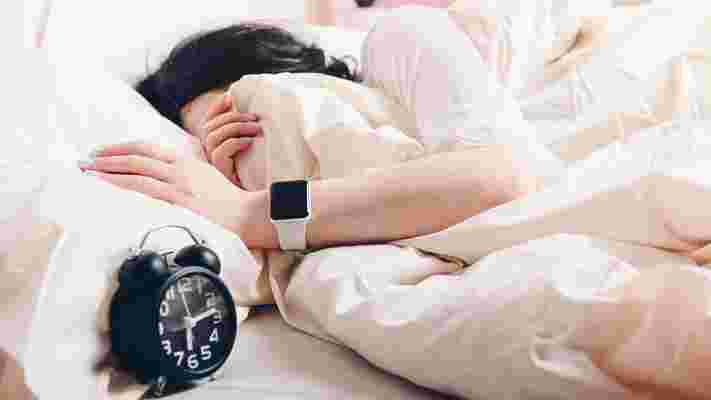
Still… my next phone will bring me back to Apple, and not because I think it offers better products. Instead, my own laziness is to blame. I love a technology ecosystem in which phones, laptops, wearables and other devices work together seamlessly, and despite many of its competitors, like Samsung, Microsoft and Huawei , developing their own family of integrated products, Apple is the master of the ecosystem, and I don’t see that changing for some time.
Depictions of what the future will look like often show what we now call smart home technology, with robot maids, flying cars that can be summoned at the push of a button, and the ability to control just about everything in your home from one console or system.
We’re a little way off truly futuristic connected homes, but robot vacuums, driverless cars and smart home ecosystems are already here. Apple has its fingers in some of those pies already, and I’ll bet it will only grow into other areas in the coming years.
I don’t want to have to manually program my devices to communicate with each other – I want that to happen out of the box, and Apple's products offer that. Devices within the Apple ecosystem are almost always the most expensive in their respective categories, but the older I get, the more I’m willing to pay for convenience. Huawei showed promise here for a while, but software restrictions imposed on its products in western markets mean it’s no longer a practical choice.
Do I think that Apple is better, or more innovative, than other brands? Not at all – and I still believe that Android mobile devices push the boat out when it comes to cool features. I'll also never expect gaming to be a better experience on macOS than it is on Windows or Linux; but outside of my hobbies that I do like to sink some time into optimizing, I want my everyday tech to work in harmony, without any issues and with minimal effort.
Crawling back to convenience
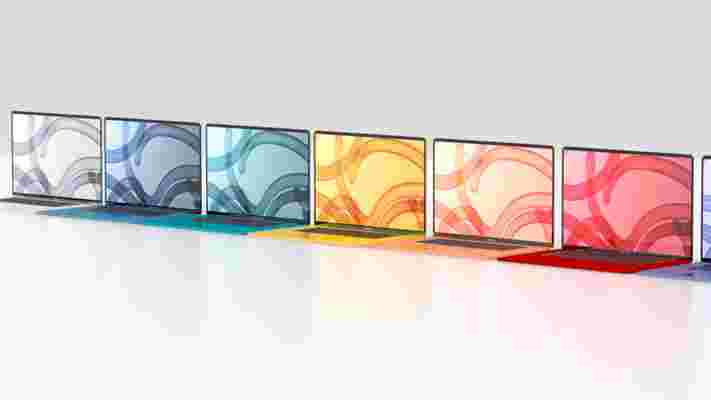
Many of my favorite mobile apps are better optimized for iOS, with TikTok being just one example of that – videos on the app look noticeably cleaner and higher-quality if filmed on an iPhone than an Android device. This is so noticeable that it’s become something of a running joke on the platform, and while there are a few ways you can improve the experience on iPhone, you need to make the effort to do so.
I also purchased an iPad Pro 12.9-inch back in 2020 that I used mostly as a mobile drawing tablet for sketching and digital artwork, so it makes sense to get a phone that will complement it. Sure, the Microsoft Surface range is a tempting alternative, but I’ve grown to love my iPad for content creation, and the ProCreate app that’s exclusive to iOS, so I can’t see myself jumping ship any time soon.
And this is the start of the slippery slope to embracing all things Apple. There are offers for the Apple Watch everywhere I look, as incentives for buying health insurance or optional extras when taking out broadband contracts. Apple TV caught my eye with exclusive content like Ted Lasso and Wolfwalkers, despite my initial reaction of “Why on earth would you need Apple TV?” echoing in my mind from my first experience of seeing it in the Apple store. I’m even in the market for some new wireless earbuds now that the JLabs I own have bitten the dust… hello AirPods.
Buying just one or two of these products makes little sense when you know how comprehensively they're integrated, and I can see that as my non-Apple gadgets start to fail or become outdated, there's a definite appeal in replacing them with something that can offer better features alongside other Apple hardware.
So if we do see a new MacBook Air released in all those beautiful colors, chances are I’ll be saving my pennies and buying my first ever Apple computing product. And after that, it likely won’t take long for me to succumb to the convenience I can enjoy by purchasing more of the company's gadgets – I already have my eyes peeled for the green iPhone that might make an appearance a today's launch event.
Unless rival brands like Samsung and Microsoft start shouting a little louder about the benefits of buying into their respective ecosystems over Apple's, I’ll soon be throwing all my tech eggs into its basket – and perhaps wondering why it took me this long.
Wordle hints #262: top tips to find today's Wordle answer
Wordle, your favorite daily word-guessing game, is a solitary exercise, but it doesn't have to be. You can do it with us and our Wordle hints, which should make solving the daily brain-frustrater all the more palatable.
We won't give you the answer right upfront, of course. Instead, we'll walk you through our solution with key tips to solving it on your own along the way.
Get ready to solve Wordle #262 together with everything you need to shake you out of that letter-based fug.
A couple of quick reminders about how Wordle, which is owned by The New York Times , works. The game asks you to guess a five-letter word in six tries. Correct letter guesses appear as orange. Correct letters in their correct spot appear as green. Unless you play in "Hard Mode," you don't have to use guessed letters in subsequent attempts.
If you don't need tips, you can jump directly to today's Wordle answer .
Spoiler Alert: If you do not want to know today’s Wordle answer, STOP READING IMMEDIATELY.
Tip: More letters in a single word
Never start Wordle with a double-letter word (more on that here: How to win at Wordle . ). Even if you had a dream telling you the correct answer is "FOOLS," don't do it.
First, it's rare to guess the word on the first try (too many options), and second, you can't afford to give up valuable letter real estate. A word like "GRAND," gives you five letter options.
Tip: Vowels and Consonants
Virtually all words have a mix of vowels, "AEIOU and sometimes Y" and consonants (all the other letters). A lot of words start with consonants like "G" but not all. Do you best, though, to mix it up. We suggest a minimum of two vowels in your first guess, but also encourage going with your first best word guess, which might only have one.
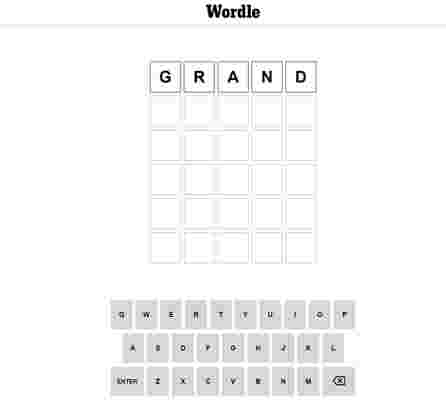
Tip: Don't panic
Zero right letters is not cause for panic. Remember, you've now ruled out five letters, three of which are key consonants. The answer possibilities have just narrowed significantly.
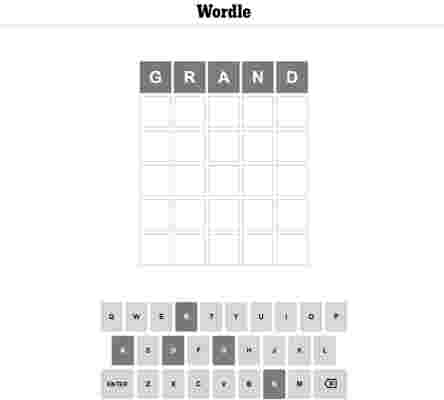
Tip: Always be ready with a new word
There are two moments in Wordle when it's time to consider a completely new word. The first is when you get zero letters right and the second is when you decide you need to collect more correct letters (or rule more out) to get much closer to the Wordle solution.
Tip: Don't reuse dead letters
Conjure all the letter combinations you can think of, but whatever you do, do not reuse one of those dismissed letters. You need a new word, preferably one with a nice mix of consonants and vowels from the remaining letter list.
Tip: Look for common letter combination
While we have no correct letters to choose from, the remainders are quite useful. Having "TH" opens a few tantalizing Wordle possibilities: "THEME" and "THOSE." Just remember the loss of an "A" also cuts away far more possible words. Always focus on what you have.
Tip: When it's early, take the leap
Getting Wordle in two guesses will always be more a product of luck than skill. Do not waste more than a few minutes trying to guess the exact right Wordle answer. Step two is almost always a building block and should position you to guess in three - if you're lucky.
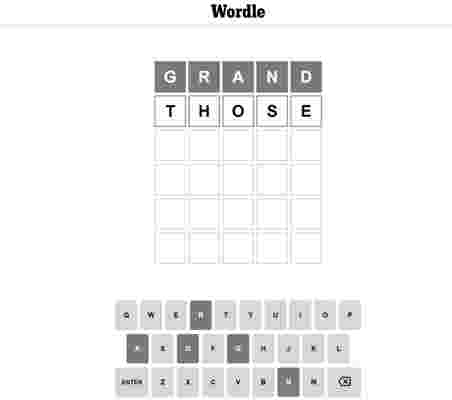
Tip: Really pay attention to what you have
The odds are that the second guess will give your at least two letters (or three, as you see here) to play with. Your third guess is not the place to rush it.
Tip: It really does matter where letters don't belong
The great thing about Wordle is that it really is telling you something when you get it wrong. An orange letter is both the right letter, but it's also telling you that it belongs anywhere but that space. Subsequent guesses about placement will give you more insight. Knowing where things don't belong is more than half the Wordle battle.
Tip: It's okay to double up in three
There have been many double letter word answers in Wordle, and in the third guess, trying a double letter is a worthwhile risk.
It's also a calculated one because letters and positions that have been excluded narrow the possibilities. In this case, the "T" can no longer sit at the front of the word. We know "S" is in there and it's a fairly common start letter. We've also lost the vowels "A" and "O," which again tightens the focus on E.
Tip: Don't forget common letter combinations
We talked about "TH" above, which we lost when "H" was moved off the board. There's still an "E" and an "I." These two letters which often appear as "IE" but not always, could sit in the middle of your word. Try out the combinations in your head.
Tip: Always make progress
Do your best to build on successes and let letter failures guide you as well. Starting over after three guesses is almost never the way to go.
Tip: Three or more correct letters means you solve offline, first
Three correct Wordle letters in the right place is your golden opportunity to solve in four. Never rush to answer. Try letter combinations in your head and on the board. Just don't hit enter until you are at least 90% certain.
Tip: Embrace the educated guess
It's always worth going through all your remaining letters to ensure they cannot fit in your open spaces. There are often two or more viable Wordle answers. In this case, because we still have "L" and "W" to choose from, "SWEEP" or "SLEEP" would work.
The choice between the two words is difficult. Going with our gut, says, "SLEEP."
Tip: Pay attention
A dumb mistake, like missing the fact that the "P" is out and the "T" is in can cost you a turn and lead you to incorrect guess.
[Author's note: This was totally done to show you a worst-case scenario. You're welcome.]
Tip: Go with the obvious
The options here are limited to, essentially "SKEET" and "SWEET." They both real and viable words, but "SKEET" is less common (how many people still skeet shoot?) and, well, we all know "sweet."
Tip: No one celebrates a "solved in five"
Take the win, but perhaps don't share it.